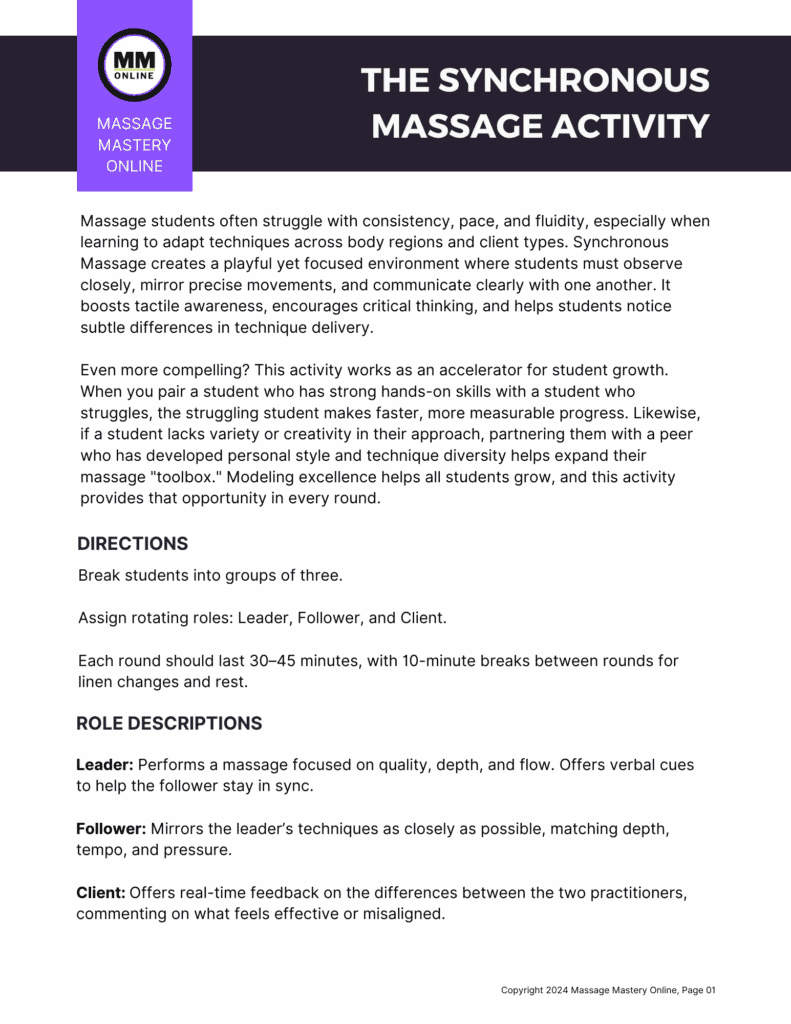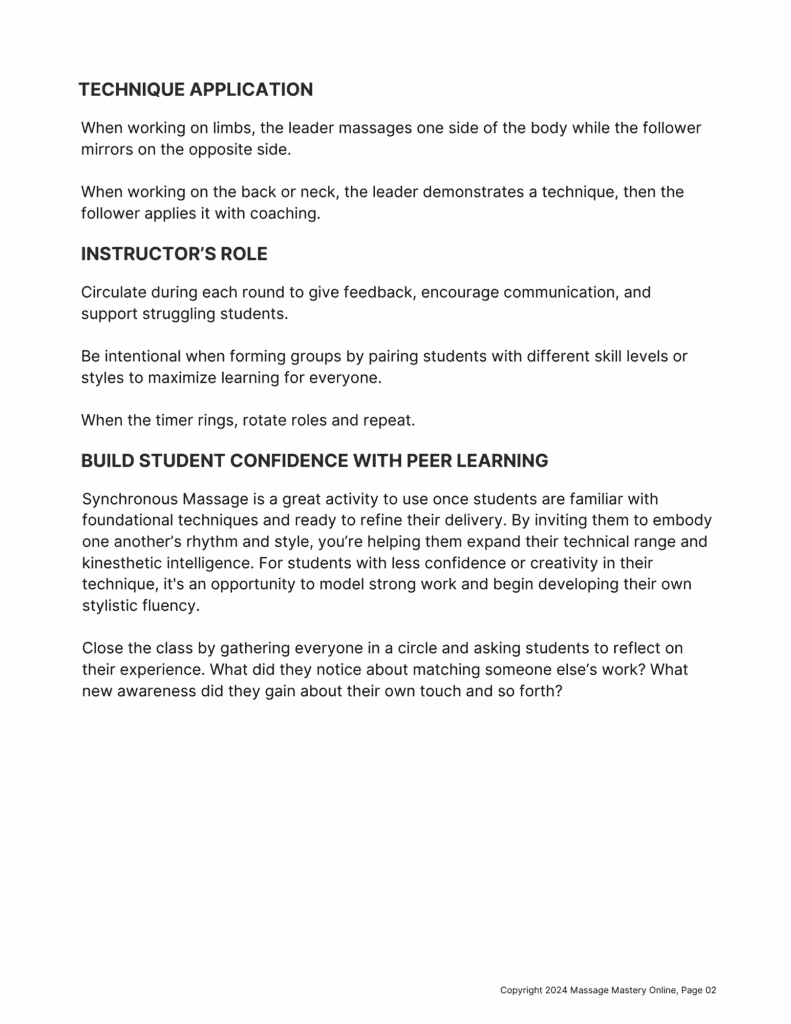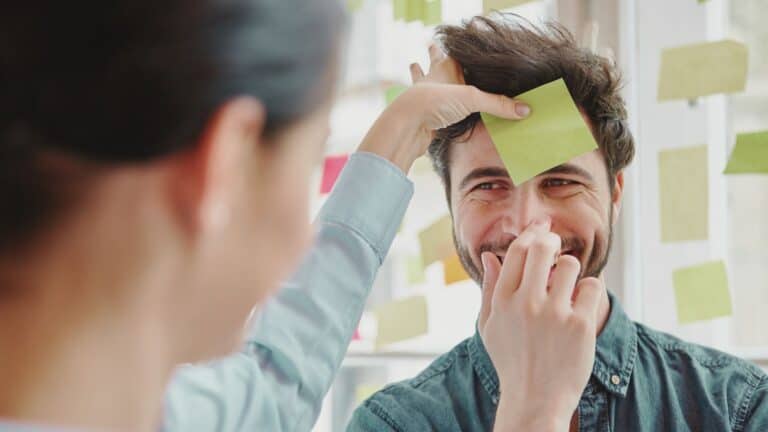The Synchronous Massage Activity
When it comes to hands-on learning, nothing beats guided peer practice. One potent activity to sharpen technique application, touch sensitivity, and session fluency is Synchronous Massage. This exercise challenges students to match one another’s movements in real time, building body awareness and helping them refine their skills through observation, imitation, and feedback. Download the PDF handout at the end of this blog post.
Why This Activity Works
Massage students often struggle with consistency, pace, and fluidity, especially when learning to adapt techniques across body regions and client types. Synchronous Massage creates a playful yet focused environment where students must observe closely, mirror precise movements, and communicate clearly with one another. It boosts tactile awareness, encourages critical thinking, and helps students notice subtle differences in technique delivery.
Even more compelling? This activity works as an accelerator for student growth. When you pair a student who has strong hands-on skills with a student who struggles, the struggling student makes faster, more measurable progress. Likewise, if a student lacks variety or creativity in their approach, partnering them with a peer who has developed personal style and technique diversity helps expand their massage “toolbox.” Modeling excellence helps all students grow, and this activity provides that opportunity in every round.
Directions
- Break students into groups of three.
- Assign rotating roles: Leader, Follower, and Client.
- Each round should last 30–45 minutes, with 10-minute breaks between rounds for linen changes and rest.
Role Descriptions:
- Leader: Performs a massage focused on quality, depth, and flow. Offers verbal cues to help the follower stay in sync.
- Follower: Mirrors the leader’s techniques as closely as possible, matching depth, tempo, and pressure.
- Client: Offers real-time feedback on the differences between the two practitioners, commenting on what feels effective or misaligned.
Technique Application:
- When working on limbs, the leader massages one side of the body while the follower mirrors on the opposite side.
- When working on the back or neck, the leader demonstrates a technique, then the follower applies it with coaching.
Instructor Role:
- Circulate during each round to give feedback, encourage communication, and support struggling students.
- Be intentional when forming groups by pairing students with different skill levels or styles to maximize learning for everyone.
- When the timer rings, rotate roles and repeat.
Build Student Confidence Through Peer Learning
Synchronous Massage is a great activity to use once students are familiar with foundational techniques and ready to refine their delivery. By inviting them to embody one another’s rhythm and style, you’re helping them expand their technical range and kinesthetic intelligence. For students with less confidence or creativity in their technique, it’s an opportunity to model strong work and begin developing their own stylistic fluency.
Close the class by gathering everyone in a circle and asking students to reflect on their experience. What did they notice about matching someone else’s work? What new awareness did they gain about their own touch and so forth?




